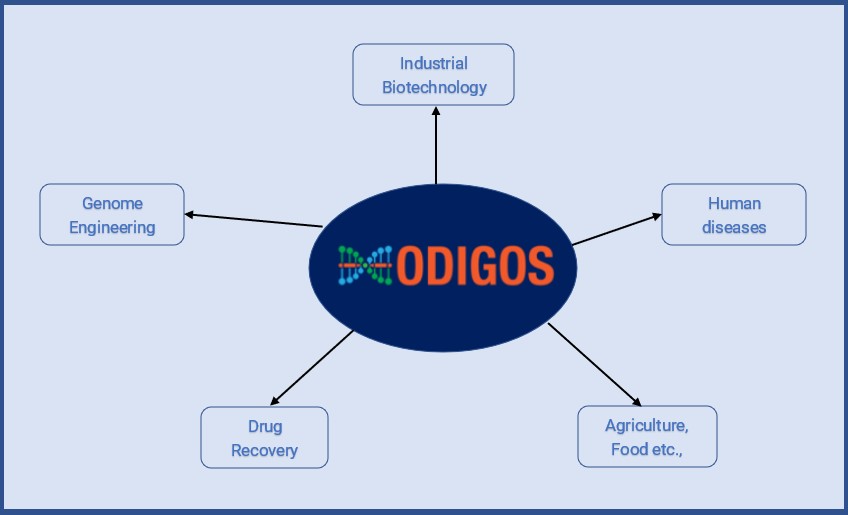Our code is located in github at https://github.com/igemsoftware2020/GunnVistaPingry_US.git
With this project, we updated and enhanced the existing CRISPRi code created by the Weissman lab at UCSF years ago to work with the latest version of Python (v3.8) and we tuned the algorithm with data collected from Real-Time qRT-PCR lab testing to improve its functionality.
Initially, one of the biggest issues we faced was making the code usable. The original algorithm had been written using Python v2.7 in 2016, so the code was out of date both in terms of the version of Python in use today as well as in terms of compatibility with the current genome database (hg38). Hence, the changes we have made can act as a foundation for future iGEM teams to build on and use for various future CRISPR-based projects. Programmers will be able to better determine the quality of the guide they have at hand and find quality guides for different hosts. They will also find that our code is versatile in that it can be adapted to work better with different statistical models in the context of their own projects.
1) Our project would enable any future iGEM team involved with genome engineering applications to design their guide RNAs with ease. They would be able to use this project's updated software to give them a confident set of guide RNAs for any target gene in the context of any project.
2) Not only can our project be used for genome editing applications with human cells, but it can be applied to the genome of any species. This was evidenced by our own collaboration with a team that was working on editing the Bovine genome. There are numerous synthetic biology-based projects in iGEM, many of which target plants and microbes, that would greatly benefit from our contributions as our algorithm enables them to select an optimal guide RNA regardless of the species in question.
3) Going beyond genome editing applications, our algorithm could be used in creating synthetic gene circuits that contain CRISPR components, specifically dCas9-KRAB. If future teams were to build such circuits/devices to modulate gene expression, our software could help them find the best guides for their circuits and hence improve their functionality.
4) Future iGEM teams could also contribute their own qRT-PCR data for the guide RNA they use. Since the machine learning algorithms in our updated software always advance with more data, future teams could build upon and improve this existing system of selecting the optimal guide RNA. We have purposefully set up our data input of table values to be convenient to include additional data submissions to enhance the program’s algorithms. Depositing more qRT-PCR data into our updated program could serve as a sub-project for future iGEM teams involved in genetic engineering projects. We also plan to build a user-friendly web portal that would allow other iGEM teams to easily input their data on the effectiveness of the guide RNA so as to continue improvement of the machine learning model’s accuracy.

With this project, we updated and enhanced the existing CRISPRi code created by the Weissman lab at UCSF years ago to work with the latest version of Python (v3.8) and we tuned the algorithm with data collected from Real-Time qRT-PCR lab testing to improve its functionality.
Initially, one of the biggest issues we faced was making the code usable. The original algorithm had been written using Python v2.7 in 2016, so the code was out of date both in terms of the version of Python in use today as well as in terms of compatibility with the current genome database (hg38). Hence, the changes we have made can act as a foundation for future iGEM teams to build on and use for various future CRISPR-based projects. Programmers will be able to better determine the quality of the guide they have at hand and find quality guides for different hosts. They will also find that our code is versatile in that it can be adapted to work better with different statistical models in the context of their own projects.
1) Our project would enable any future iGEM team involved with genome engineering applications to design their guide RNAs with ease. They would be able to use this project's updated software to give them a confident set of guide RNAs for any target gene in the context of any project.
2) Not only can our project be used for genome editing applications with human cells, but it can be applied to the genome of any species. This was evidenced by our own collaboration with a team that was working on editing the Bovine genome. There are numerous synthetic biology-based projects in iGEM, many of which target plants and microbes, that would greatly benefit from our contributions as our algorithm enables them to select an optimal guide RNA regardless of the species in question.
3) Going beyond genome editing applications, our algorithm could be used in creating synthetic gene circuits that contain CRISPR components, specifically dCas9-KRAB. If future teams were to build such circuits/devices to modulate gene expression, our software could help them find the best guides for their circuits and hence improve their functionality.
4) Future iGEM teams could also contribute their own qRT-PCR data for the guide RNA they use. Since the machine learning algorithms in our updated software always advance with more data, future teams could build upon and improve this existing system of selecting the optimal guide RNA. We have purposefully set up our data input of table values to be convenient to include additional data submissions to enhance the program’s algorithms. Depositing more qRT-PCR data into our updated program could serve as a sub-project for future iGEM teams involved in genetic engineering projects. We also plan to build a user-friendly web portal that would allow other iGEM teams to easily input their data on the effectiveness of the guide RNA so as to continue improvement of the machine learning model’s accuracy.


